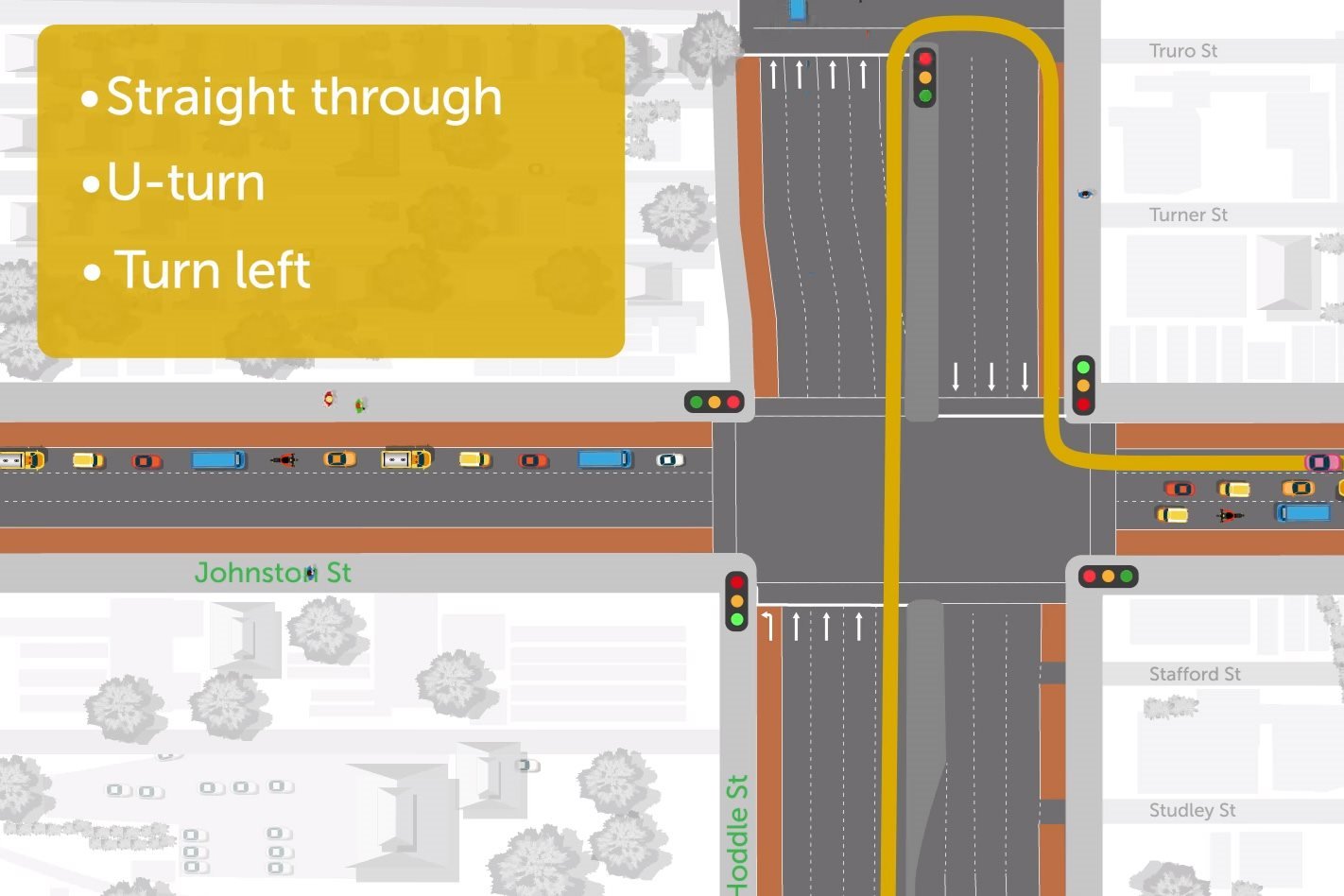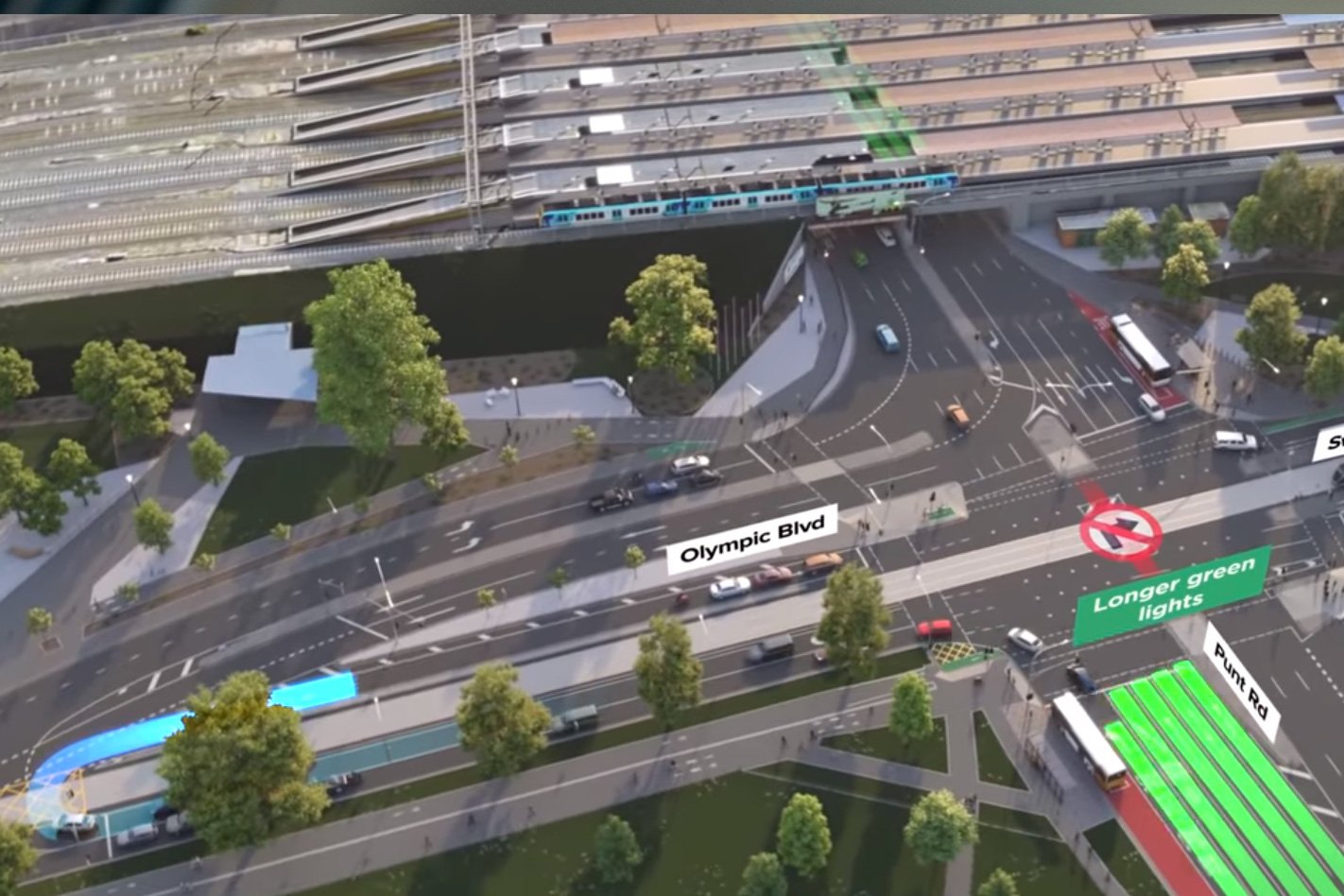
Melbourne’s ‘hook turns’ have been confusing and, in some cases, intimidating motorists for decades, and Victoria’s capital now has a new unique traffic control innovation to call its own: the P-turn. However while it might sound like the most arcane method of turning a corner, P-turns are nothing to be feared as long as you understand how they work before encountering one.
Also referred to as a ‘remote right turn’ the manoeuvre allows large amounts of traffic to make a right turn at an intersection while minimally restricting the flow of vehicles that are continuing straight on and without the need for a right-turn green arrow.
If you frequently drive though Melbourne’s busier traffic zones, you’ll see more of these new traffic features rolling out. Here’s everything you need to know about a P-turn.
Why does Melbourne need P-turns?
With about 4000 people added to Melbourne’s population each week, the number of vehicles on the road network is increasing significantly and new methods of keeping all that traffic moving are required.
A significant cause of bottlenecks and congestion are right turns at intersections, particularly in high volume areas, and a P-turn allows larger numbers of cars to make a right turn in each traffic light cycle, thereby allowing a freer flow of traffic.
P-turns will take some of the pressure away from certain identified hot-spots, spreading the load on the roads more evenly.
What do I need to do at a P-turn?
It seems counterintuitive but, like a hook turn, vehicles that intend to turn right need to approach the intersection in the left lane. Signposts will direct you to do this.
From here, the turning traffic is first directed to the left – away from the intersection – and then turn another 180 degrees through a u-turn. This corrals the traffic into a holding lane with its own set of signals at the intersection. Your vehicle will now be facing the direction you wanted to turn as you approached the intersection.
When the light goes green, traffic is allowed to flow through the intersection, effectively making a right turn from your original course.

What are the advantages of a P-turn?
Unlike a hook turn or conventional right-turn lane, the dedicated P-turn lane can accommodate far more cars, and the vehicles are held away from the onward flow of traffic at the intersection. This results in two distinct advantages – traffic cannot back up and restrict flow at the intersection and more vehicles are allowed to turn right when released by the signals.
The net result is more continuous traffic flow and more time allowed for the vehicles that want to continue straight ahead at intersections.
The P-turn name comes from the United States where vehicles drive on the right. When the turn is made in the opposite direction, the flow of traffic traces the shape of a letter P, but in left-hand drive countries including Australia the P is back to front.
Where you’ll find a P-turn
The first two P-turns are now in operation on the Hoddle Street, Swan Street, Olympic Boulevard intersection and a little further along Hoddle Street at the Johnston Street intersection in Collingwood.
Temporary blue and pink line markings are used to help drivers understand the changes especially if they are used to the pre-P-turn system and traffic officers are also being used to assist where required until motorists are up to speed. You might have spotted another similar turn that has been in use in Frankston for many years, although this one is a different design and doesn’t offer as many advantages.
Melbourne’s car park is not looking likely to shrink any time soon so you can expect to see more new traffic control solutions rolling out in the coming years including the P-turn, so make sure the P stands for prepared!




